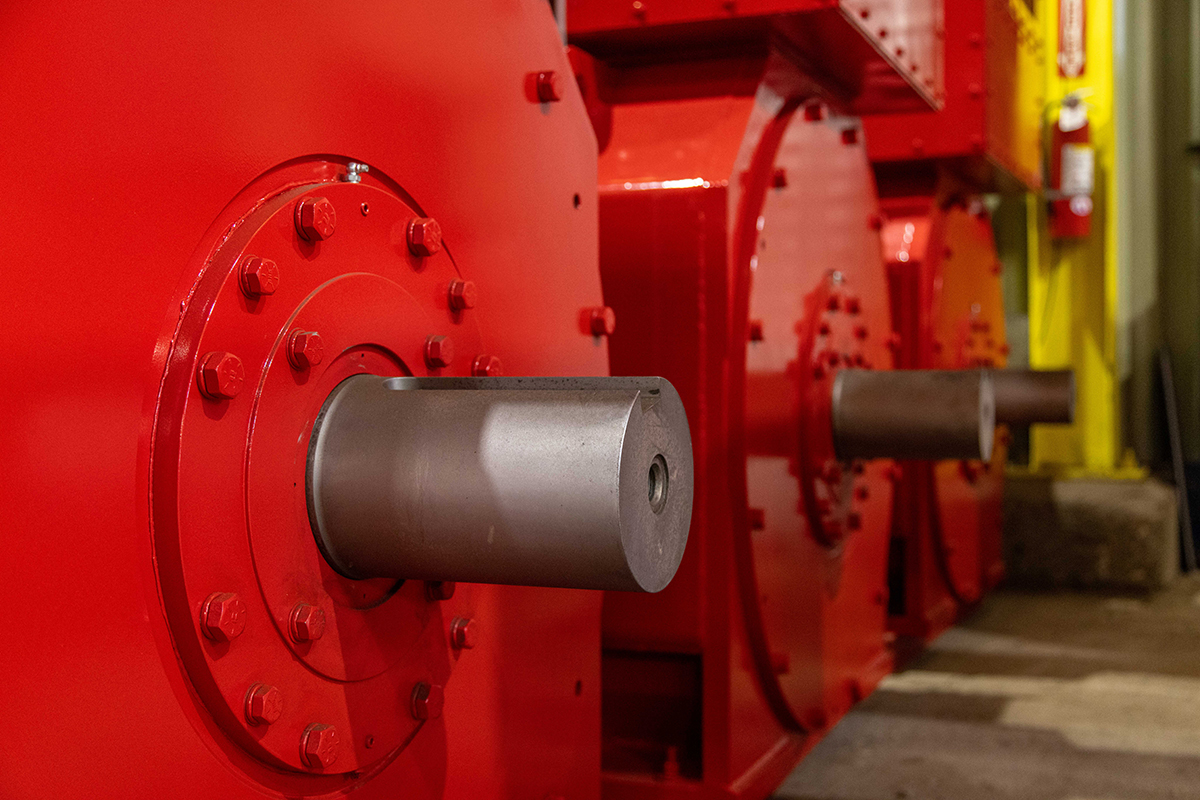Both AC and DC motors play a key role in industrial applications. As industries undergo industrial electrification, operational effectiveness through electrical motors becomes a top priority for industry leaders. It’s important to select the right type of motor for your facility’s specific uses, as this choice significantly impacts the energy efficiency of your systems.
Are you struggling to determine the right motor type for your manufacturing facility or industrial plant? Let us help you navigate the complex world of AC and DC motors, ensuring optimal energy efficiency and performance for your specific application. Gaining a thorough understanding of the appropriate uses of both AC and DC motors is essential for operations managers.
Comparing AC and DC Motors: Advantages and Disadvantages
To determine which motor is right for your organization, it’s important to first understand the difference between AC and DC motors, as well as their unique advantages and use cases. Depending on your industry, one system may be far superior in helping you achieve optimal operational capacity for your facility.
AC Motors
AC motors offer the advantage of relatively low cost, making them an accessible option with a wide range of suppliers. When consistently used at a constant speed, these motors can achieve a high level of energy efficiency.
However, AC motors are not the best option for systems with varying rates of use and alternating loads. Additionally, they require a larger motor size to perform tasks equivalent to DC motors, without the benefit of increased load capacity, making them a bulkier choice.
DC Motors
DC motors excel in precise speed control and higher starting torque, even at smaller sizes. They also boast a significantly higher level of power compared to AC motors.
Despite their efficiency advantages, DC motors have higher upfront costs and require more frequent maintenance. These needs make them a less favorable option for some industrial applications.
Identifying Key Factors for Motor Selection: AC vs. DC Motors
When selecting the ideal motor type for your facility, it is crucial to thoroughly evaluate your system demands, budget constraints, and maintenance and repair needs. Understanding these factors will help you make an informed decision about whether an AC or DC motor is the best fit for your specific industrial processes.
Assessing System Demands
Before exploring other factors, it is essential to carefully examine these key elements of your system demands:
- Load type: Identify the motor that best handles the stress and load requirements of your system.
- Speed control needs: Determine the motor that offers optimal performance for your facility’s specific speed requirements and flexibility.
- Power requirements: Examine the power capacity and variations in power consumption your facility demands to make an informed decision on your motor type.
Budget Constraints and Maintenance Considerations
Budget constraints play a significant role in choosing between AC and DC motor systems. While AC systems may not be as flexible as DC systems, they offer a favorable up-front cost, making them an ideal option for many facilities with limited budget flexibility.
The maintenance and repair needs of AC and DC motors differ considerably. If your facility can accommodate the maintenance needs of DC motors without significantly affecting cost efficiency, it may be the better option. Conversely, if the lower maintenance requirements of an AC motor-driven system better align with your facility’s operating budget, it may be the more favorable choice.
Evaluating Your Power Equipment’s Energy Efficiency and Environmental Impact
When deciding between AC and DC motors, it is vital to consider their effects on energy efficiency and the environment. As industries increasingly emphasize sustainability, choosing the right motor type contributes to reduced energy consumption and decreased greenhouse gas emissions.
AC Motors and Energy Efficiency
AC motors, coupled with advanced motor controllers, have significant advantages in terms of managing the “power factor,” which is the amount of load the system places on the electrical utility. AC motor controllers are highly effective in modulating this factor, leading to more efficient energy utilization. In contrast, starting a DC motor often results in a large initial draw, which can be a concern given that utilities often base their monthly electricity rate on such peak demand.
Operating AC motors at a steady speed results in superior energy efficiency. Nonetheless, even in situations where the rates of use fluctuate, or loads alternate, AC motor controllers provide a greater level of control, facilitating more efficient power management. Thus, by implementing AC motors in appropriate applications, your facility’s overall energy efficiency can be significantly enhanced.
DC Motors and Sustainability
DC motors, with their ability to deliver higher starting torque and maintain precise speed control, can significantly contribute to energy efficiency and sustainability in specific industrial applications. Understanding the unique capabilities of DC motors and employing them strategically allows you to:
- Decrease energy consumption
- Minimize your facility’s environmental impact
Choosing the appropriate motor type is critical in enhancing energy efficiency and sustainability across various industries. By comprehending the strengths and limitations of both AC and DC motors, you can make informed decisions that benefit your facility and the environment.
Recycling Industry Example: Redundancy and Load Shock Reduction with AC Motors
In response to the growing obsolescence of DC systems and a lack of service facilities willing to repair them, the recycling industry is increasingly adopting AC motors as a modern alternative. The shift is particularly noticeable in automobile shredder recycling facilities, where AC motors and Variable Frequency Drives (VFDs) are being implemented. This changeover typically involves replacing one large DC motor with two smaller AC motors, each half the power of the original DC motor.
Such a setup with AC motors and VFD drives yields several benefits, including better stress distribution, decreased downtime, improved load handling, and increased system redundancy – all leading to higher profit margins. It’s important to note that this approach may not be feasible for all industries due to initial investment costs and the potential scarcity of replacement parts.
Experts in Effective Power Equipment Selection in Industrial Electrification
Choosing between AC and DC motors is no small task. It requires understanding your specific industrial needs. Partnering with electrification specialists can help you select the power equipment that best suits your plant or facility’s operational load.
At Industrial Service Solutions, we understand the importance of choosing the right motor for your facility. Our team operates the nation’s largest load-test facility, where we repair, rebuild, and refurbish power equipment on-site. With testing capabilities of up to 6,000 hp, we can support you throughout your facility-wide electrification process.


